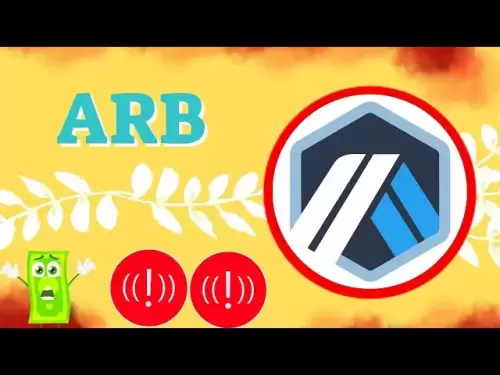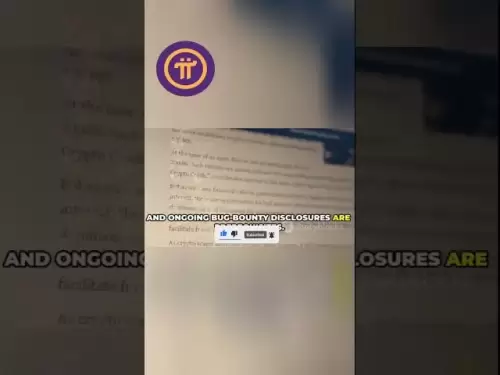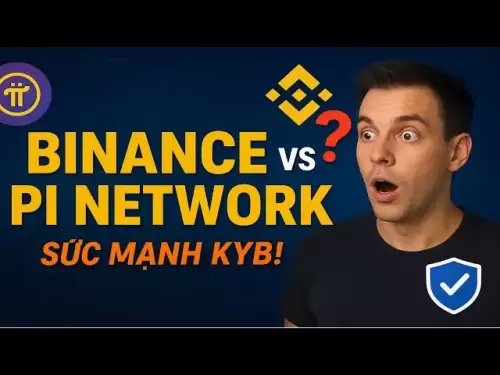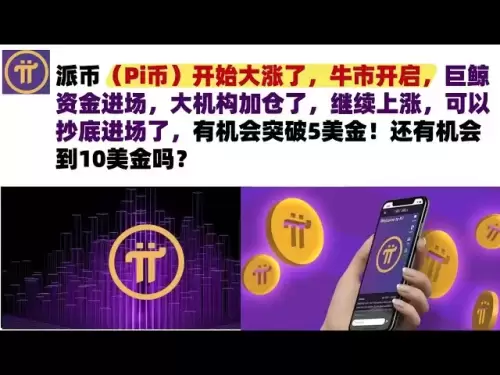-
 Bitcoin
Bitcoin $116900
0.00% -
 Ethereum
Ethereum $4280
5.48% -
 XRP
XRP $3.265
-1.45% -
 Tether USDt
Tether USDt $1.000
-0.01% -
 BNB
BNB $807.0
1.41% -
 Solana
Solana $183.1
2.93% -
 USDC
USDC $0.9999
0.00% -
 Dogecoin
Dogecoin $0.2440
6.50% -
 TRON
TRON $0.3357
-0.88% -
 Cardano
Cardano $0.8178
2.63% -
 Hyperliquid
Hyperliquid $44.13
7.45% -
 Chainlink
Chainlink $21.39
9.09% -
 Stellar
Stellar $0.4524
-0.84% -
 Sui
Sui $3.957
2.13% -
 Bitcoin Cash
Bitcoin Cash $572.7
-2.54% -
 Hedera
Hedera $0.2671
1.54% -
 Avalanche
Avalanche $24.77
4.17% -
 Ethena USDe
Ethena USDe $1.001
0.02% -
 Litecoin
Litecoin $122.3
-1.94% -
 Toncoin
Toncoin $3.432
2.26% -
 UNUS SED LEO
UNUS SED LEO $9.007
0.49% -
 Shiba Inu
Shiba Inu $0.00001396
5.26% -
 Uniswap
Uniswap $11.09
1.64% -
 Polkadot
Polkadot $4.155
4.57% -
 Dai
Dai $1.000
0.00% -
 Pepe
Pepe $0.00001253
5.11% -
 Cronos
Cronos $0.1588
2.67% -
 Bitget Token
Bitget Token $4.512
0.05% -
 Monero
Monero $275.0
0.64% -
 Ethena
Ethena $0.7527
15.10%
How to buy SOL at a low price using limit orders?
To buy Solana (SOL) at a low price, use limit orders on a reputable exchange, set a realistic target price, and monitor the order book dynamics closely.
Mar 28, 2025 at 01:21 pm
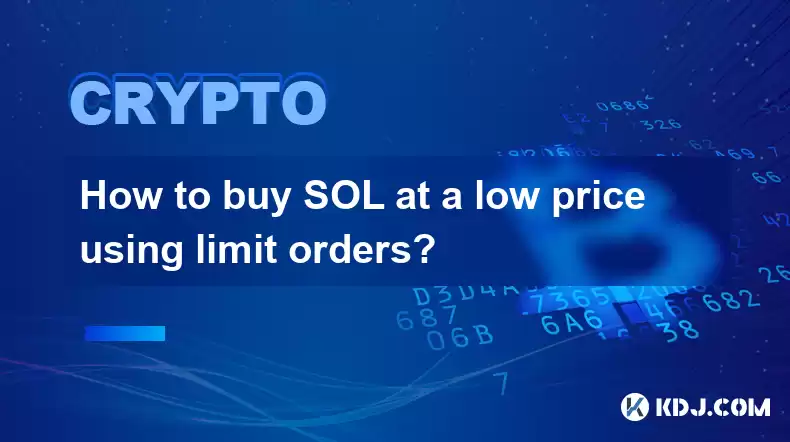
Understanding Limit Orders and Solana (SOL)
Buying Solana (SOL) at a low price often involves utilizing limit orders. A limit order is an instruction you give to your cryptocurrency exchange to buy or sell an asset only at a specified price or better. This contrasts with a market order, which executes immediately at the best available price, regardless of whether it's favorable to you. Using limit orders gives you more control over your purchase price, potentially saving you money if the price drops. However, there's a risk the order might not fill if the price doesn't reach your target.
Choosing the Right Exchange
The first step in buying SOL at a low price using limit orders is selecting a reputable cryptocurrency exchange that supports SOL trading and offers limit order functionality. Many exchanges offer SOL trading pairs with various fiat currencies (like USD, EUR) or other cryptocurrencies (like BTC, ETH). Research different exchanges, comparing their fees, security measures, and user interface before making a choice. Security and reliability are paramount when choosing an exchange.
Funding Your Exchange Account
Once you've chosen an exchange, you'll need to fund your account. The method depends on the exchange and your location. Common methods include bank transfers, debit/credit card payments, and even other cryptocurrencies. Carefully review the deposit fees and processing times associated with each method. Ensure you understand the exchange's security protocols and keep your account details confidential.
Placing a Limit Order to Buy SOL
After funding your account, navigate to the SOL trading pair on your chosen exchange. You'll typically see options for "Buy" and "Sell," along with order types like "Market" and "Limit." Select "Limit" and then:
- Enter the amount of SOL you wish to buy.
- Enter the price per SOL you're willing to pay (this is your limit price). This is crucial; setting it too low might mean your order never fills.
- Review your order details carefully before confirming. Double-check the price and amount to avoid errors.
Your limit order will now be placed on the order book. It will only execute if the market price of SOL reaches or falls below your specified limit price.
Monitoring Your Limit Order
After placing your limit order, monitor its status on your exchange's order history. The order might fill immediately if the market price is at or below your limit price, or it might remain open for an extended period, or even indefinitely, if the price doesn't reach your target. Regularly check the order status and adjust as needed, especially if the market is volatile. You may choose to cancel the order if the price moves significantly against your expectations.
Understanding Order Book Dynamics
The order book is a crucial aspect of understanding how limit orders function. It displays all buy and sell orders currently placed on the exchange. Your limit order will be added to the buy side of the order book. The order will only execute when it matches a sell order at or above your specified price. Studying the order book can help you identify potential support and resistance levels, informing your limit order price selection.
Adjusting Your Limit Order
If the market price moves against you and your limit order hasn't filled, you have the option to adjust it. You can either:
- Increase your limit price: This increases your chances of the order filling but reduces your potential savings.
- Cancel your limit order: This removes your order from the order book. You can then place a new order with a different price or quantity.
- Leave it as is: If you believe the price will eventually reach your target, you can choose to wait.
The best approach depends on your risk tolerance and market outlook.
Setting Realistic Expectations
Remember, there's no guarantee your limit order will fill. Market conditions are constantly changing, and price movements can be unpredictable. Setting a limit price significantly below the current market price might result in your order remaining unfilled for a long time or not filling at all. Be realistic about your price target and consider market trends before placing your order. A more modest price reduction may yield better results than aiming for an overly ambitious discount.
Security Best Practices
Always prioritize security when trading cryptocurrencies. Use strong, unique passwords for your exchange accounts and enable two-factor authentication (2FA) wherever possible. Be wary of phishing scams and only access your exchange accounts through official websites or apps. Never share your private keys or seed phrases with anyone. Regularly review your account activity for any suspicious transactions.
Diversification and Risk Management
Don't invest more money than you can afford to lose. Diversifying your cryptocurrency portfolio across different assets can help mitigate risk. Limit orders can be a useful tool for managing risk, but they are not a foolproof method for buying at the absolute lowest price. Always conduct thorough research and understand the risks involved before investing in any cryptocurrency.
Frequently Asked Questions
Q: What happens if the price of SOL never reaches my limit price?
A: Your limit order will remain unfilled. You can either cancel it or leave it open, hoping the price will eventually reach your target.
Q: Are there fees associated with placing limit orders?
A: Most exchanges charge trading fees, which are typically a percentage of the transaction value. These fees apply to both limit and market orders.
Q: Can I place multiple limit orders for SOL at different prices?
A: Yes, most exchanges allow you to place multiple limit orders simultaneously. This can be a helpful strategy for averaging your purchase price.
Q: What if the price of SOL drops significantly below my limit price?
A: If the price falls significantly, your order may fill quickly, or you may want to adjust your limit price or cancel the order and place a new one.
Q: How long does a limit order typically remain active?
A: The duration of a limit order depends on the exchange and your settings. Some exchanges allow you to specify an expiration time, while others keep the order open until it is filled or canceled.
Q: Is using a limit order guaranteed to get me the lowest price?
A: No, there's no guarantee. Market conditions are dynamic, and sudden price swings can occur. A limit order simply gives you more control over your purchase price than a market order.
Disclaimer:info@kdj.com
The information provided is not trading advice. kdj.com does not assume any responsibility for any investments made based on the information provided in this article. Cryptocurrencies are highly volatile and it is highly recommended that you invest with caution after thorough research!
If you believe that the content used on this website infringes your copyright, please contact us immediately (info@kdj.com) and we will delete it promptly.
- Penny Crypto Dreams: Can XRP Reach $10,000? A Look at LILPEPE and the Meme Coin Mania
- 2025-08-10 04:50:11
- World Liberty Financial's $1.5B Fundraise: What's the Deal with the WLFI Token?
- 2025-08-10 04:30:12
- Ozak AI, Tokens, and Investment: What's the Buzz?
- 2025-08-10 04:35:15
- Pepe Coin Price Prediction: Will the Memecoin Frog Leap to 100x Gains?
- 2025-08-10 04:50:11
- Solana Meme Coin Presales: Hype or the Next Big Thing?
- 2025-08-10 02:50:12
- Pi Network, Altcoin Season, and Breakout Tokens: What's Hot in 2025?
- 2025-08-10 02:50:12
Related knowledge

How to purchase Aragon (ANT)?
Aug 09,2025 at 11:56pm
Understanding Aragon (ANT) and Its PurposeAragon (ANT) is a decentralized governance token that powers the Aragon Network, a platform built on the Eth...

Where can I buy UMA (UMA)?
Aug 07,2025 at 06:42pm
Understanding UMA and Its Role in Decentralized FinanceUMA (Universal Market Access) is an Ethereum-based decentralized finance (DeFi) protocol design...

How to buy Storj (STORJ) tokens?
Aug 09,2025 at 07:28am
Understanding Storj (STORJ) and Its Role in Decentralized StorageStorj is a decentralized cloud storage platform that leverages blockchain technology ...
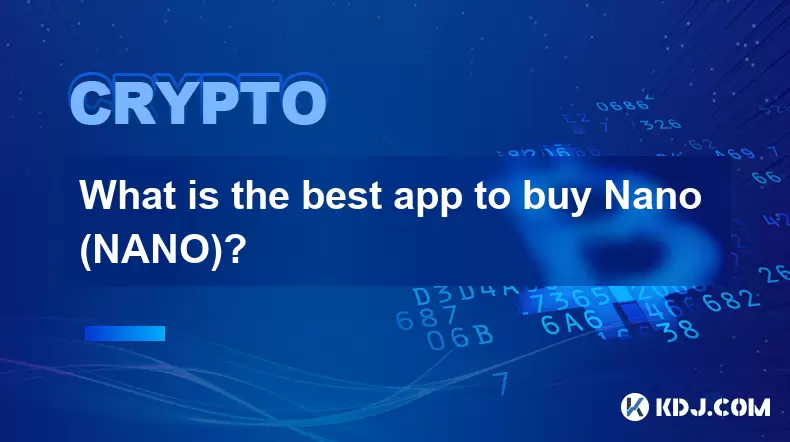
What is the best app to buy Nano (NANO)?
Aug 09,2025 at 03:35am
Understanding Nano (NANO) and Its Unique FeaturesNano is a feeless, instant cryptocurrency designed for fast peer-to-peer transactions. Unlike many ot...
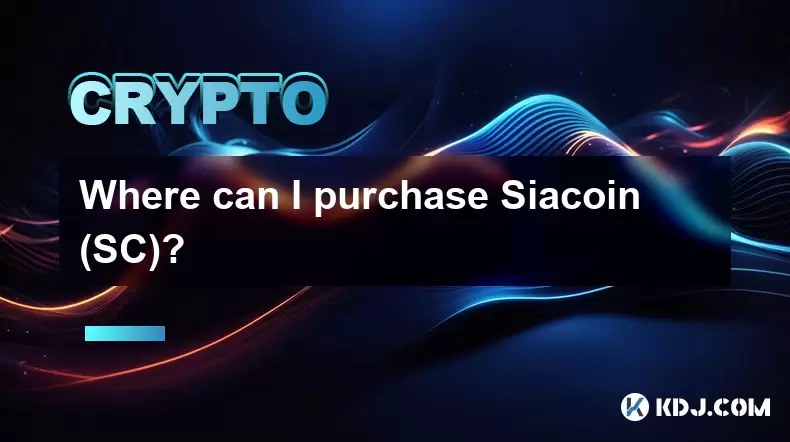
Where can I purchase Siacoin (SC)?
Aug 08,2025 at 11:14am
Understanding Siacoin (SC) and Its Role in the Sia NetworkSiacoin (SC) is the native cryptocurrency of the Sia decentralized cloud storage platform, a...
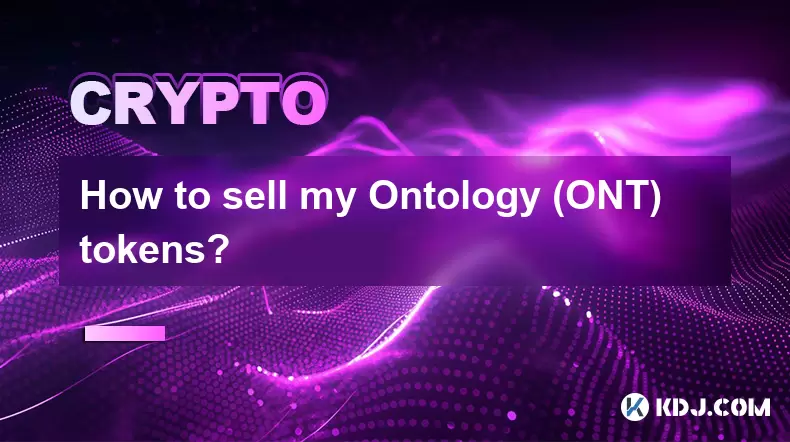
How to sell my Ontology (ONT) tokens?
Aug 09,2025 at 06:08pm
Understanding Ontology (ONT) and Its Trading EcosystemBefore selling your Ontology (ONT) tokens, it's essential to understand the nature of the crypto...

How to purchase Aragon (ANT)?
Aug 09,2025 at 11:56pm
Understanding Aragon (ANT) and Its PurposeAragon (ANT) is a decentralized governance token that powers the Aragon Network, a platform built on the Eth...

Where can I buy UMA (UMA)?
Aug 07,2025 at 06:42pm
Understanding UMA and Its Role in Decentralized FinanceUMA (Universal Market Access) is an Ethereum-based decentralized finance (DeFi) protocol design...

How to buy Storj (STORJ) tokens?
Aug 09,2025 at 07:28am
Understanding Storj (STORJ) and Its Role in Decentralized StorageStorj is a decentralized cloud storage platform that leverages blockchain technology ...

What is the best app to buy Nano (NANO)?
Aug 09,2025 at 03:35am
Understanding Nano (NANO) and Its Unique FeaturesNano is a feeless, instant cryptocurrency designed for fast peer-to-peer transactions. Unlike many ot...

Where can I purchase Siacoin (SC)?
Aug 08,2025 at 11:14am
Understanding Siacoin (SC) and Its Role in the Sia NetworkSiacoin (SC) is the native cryptocurrency of the Sia decentralized cloud storage platform, a...

How to sell my Ontology (ONT) tokens?
Aug 09,2025 at 06:08pm
Understanding Ontology (ONT) and Its Trading EcosystemBefore selling your Ontology (ONT) tokens, it's essential to understand the nature of the crypto...
See all articles





















